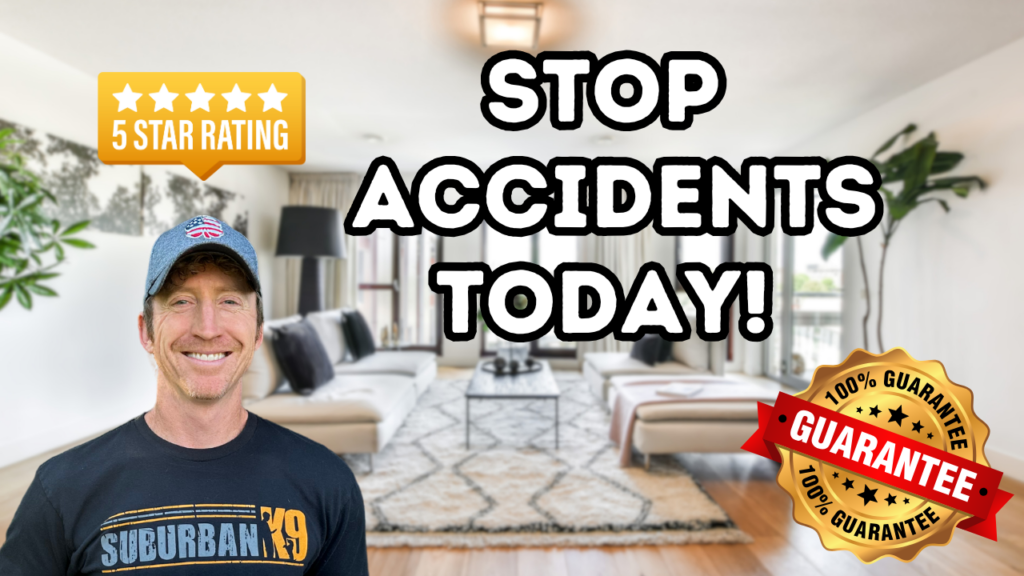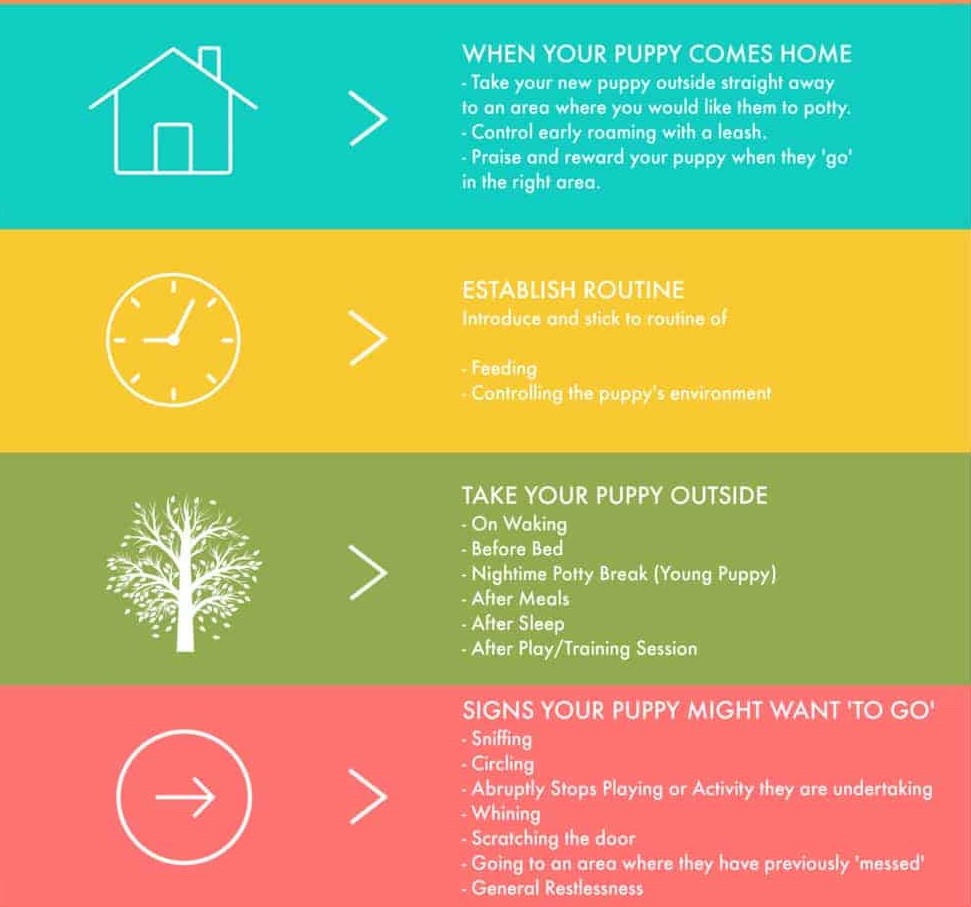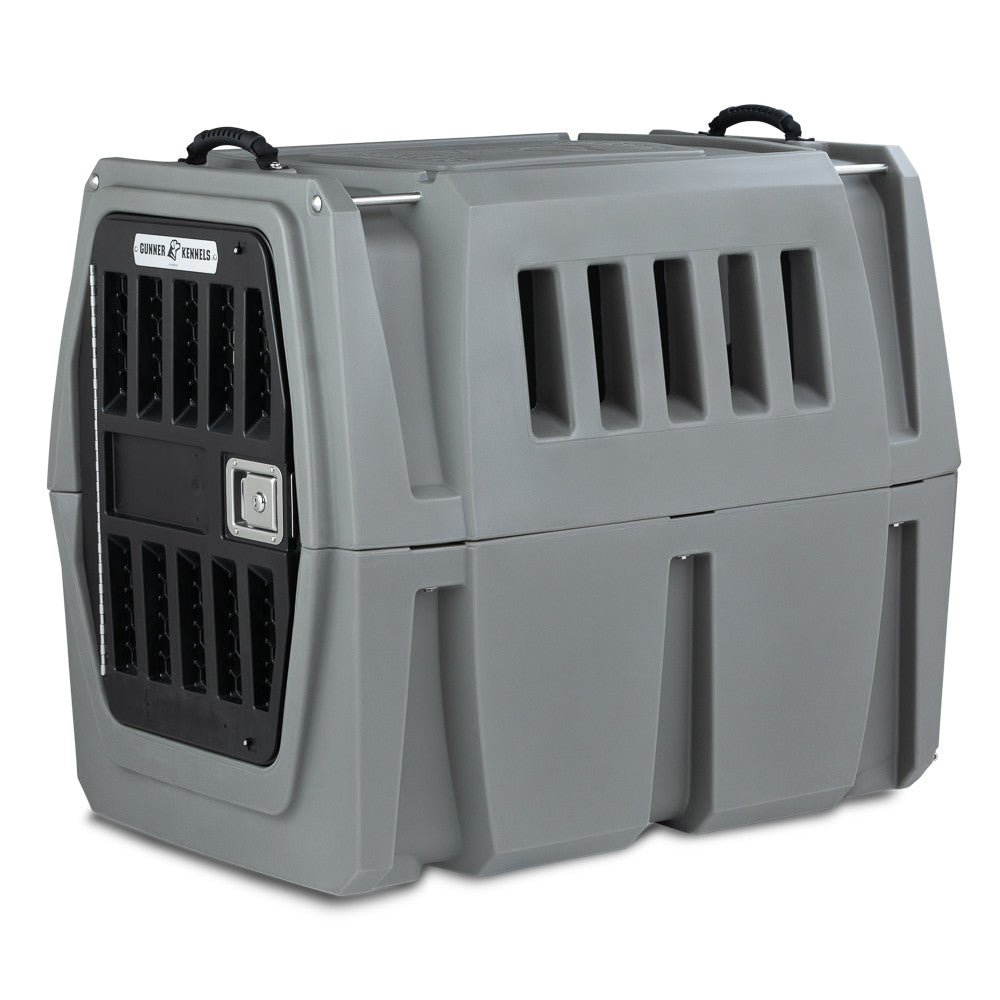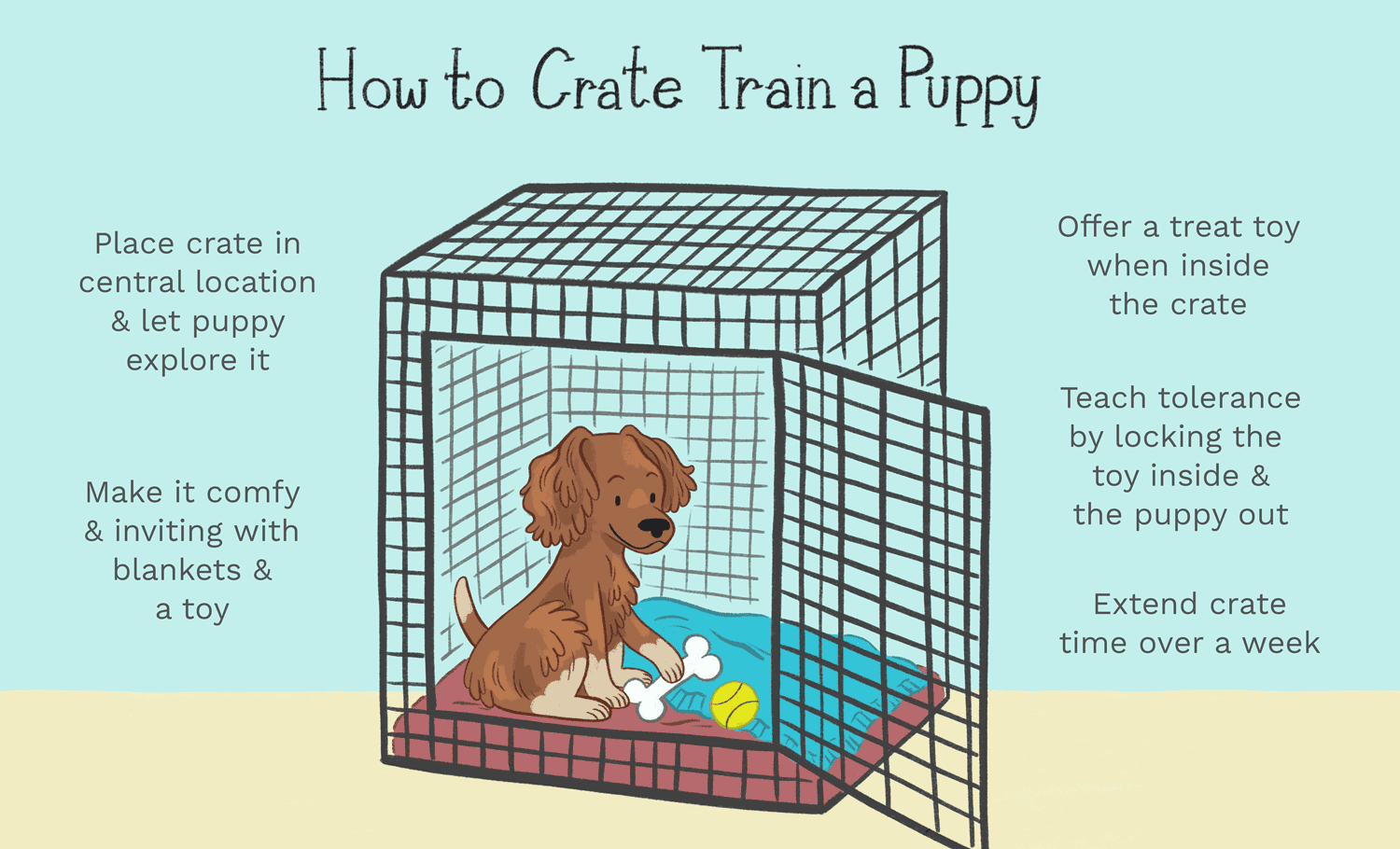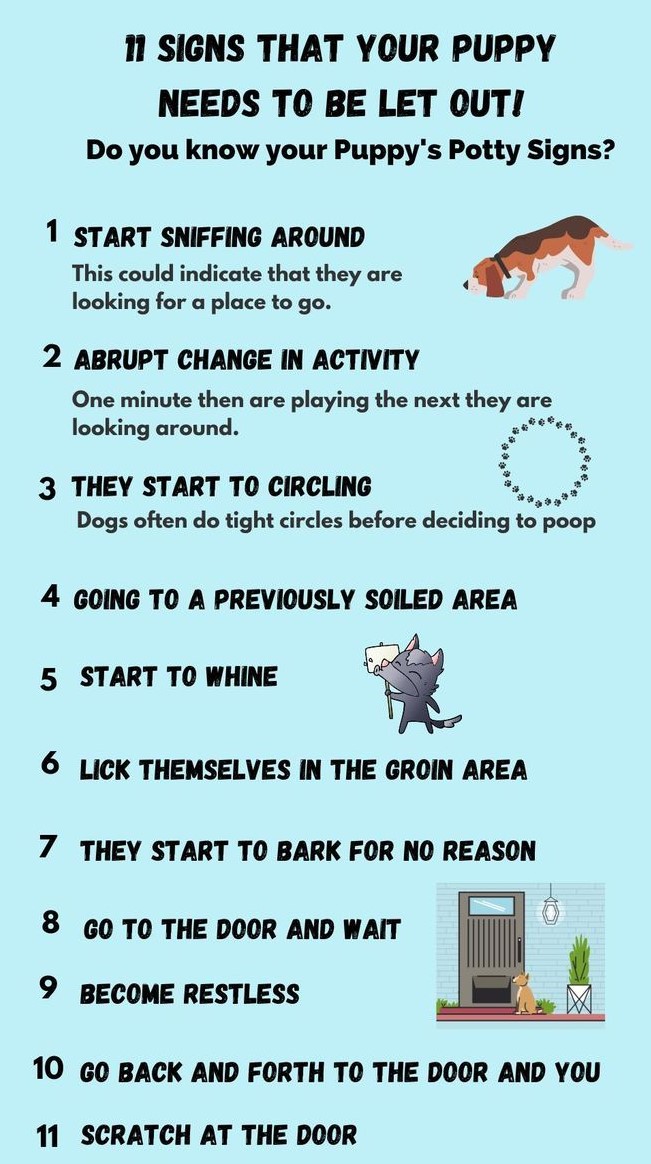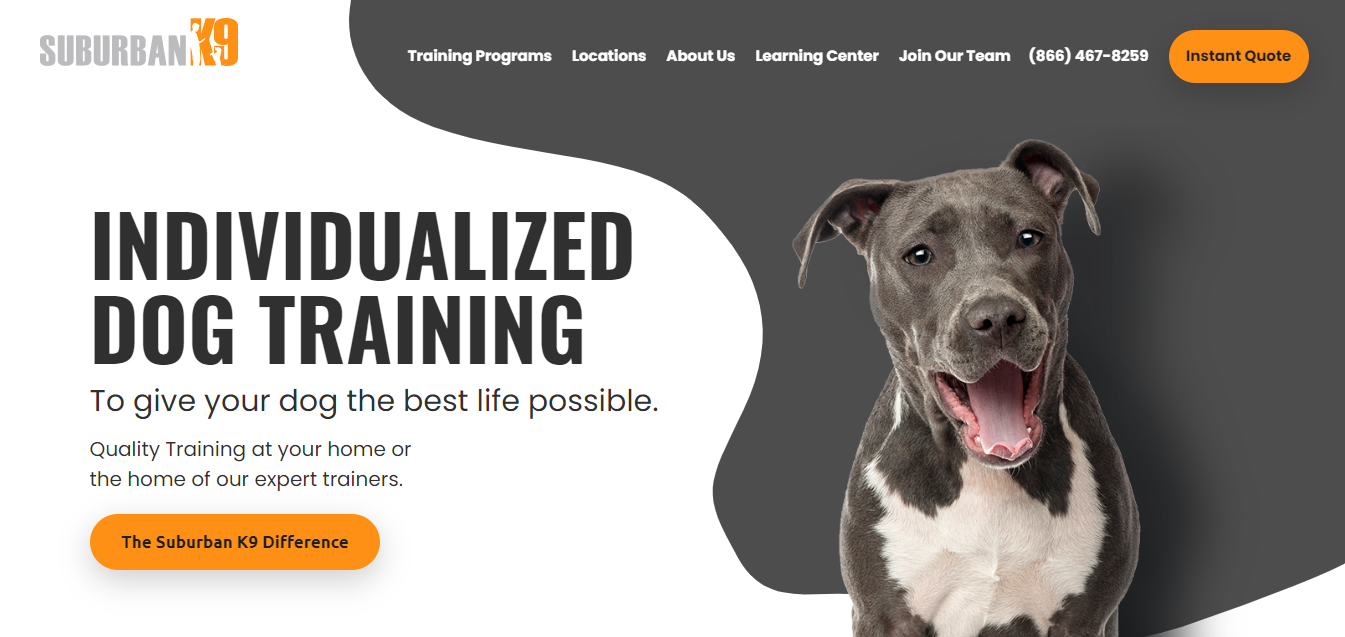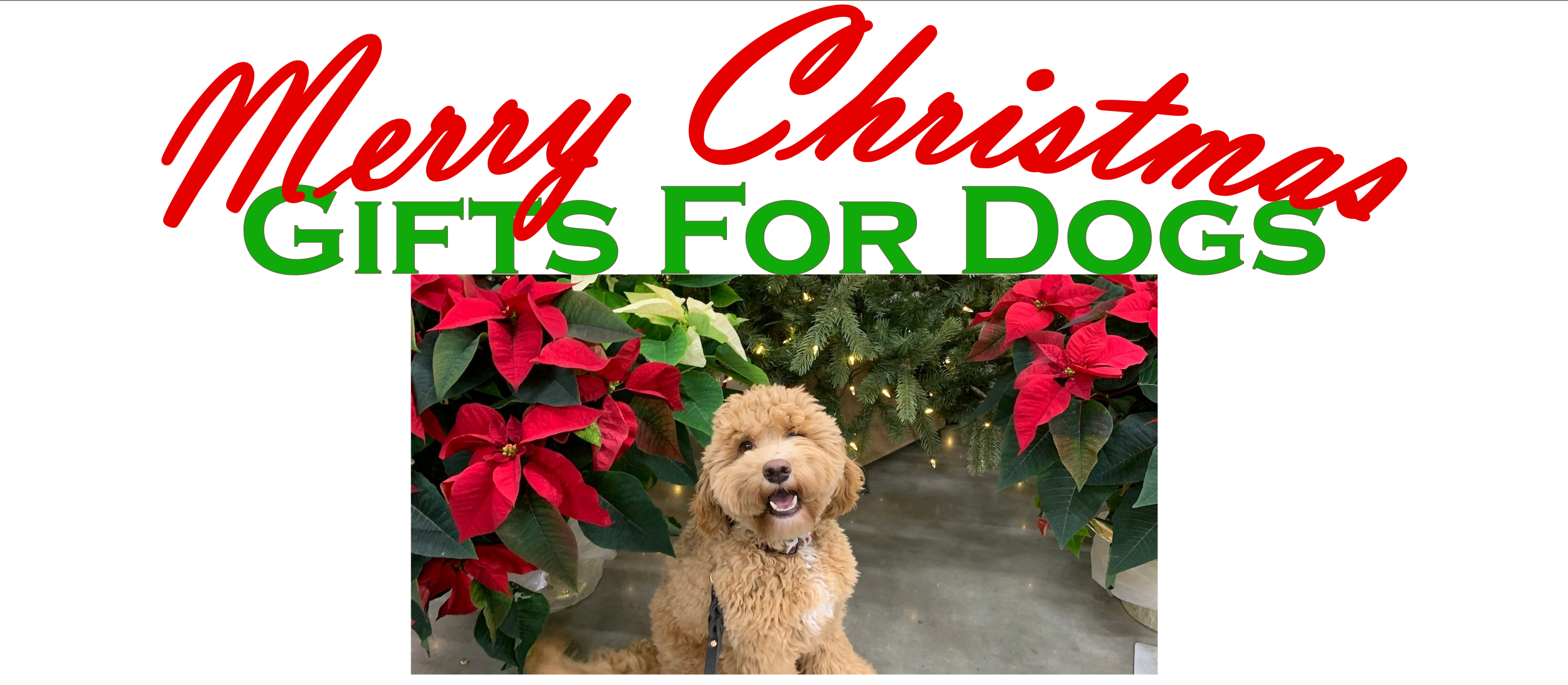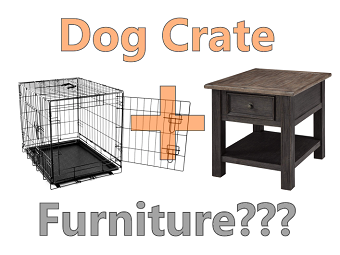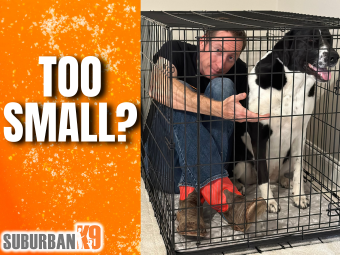Congratulations on becoming a new pup parent! We are sure you are super excited right now. Sorry to burst your bubble, but with oodles of excitement comes an equal share of responsibilities. How to potty train a puppy snags the top spot in the list of these responsibilities.
Just like teaching your baby step-by-step how to “life”, you have to teach a pup to do that as well. Petrified? Don't know where to begin? Worried about how long of a commitment it will be?
Well, you can stop that train of thought right now!
What if we told you that potty training a puppy in just 7 days is totally doable? We promise you no voodoo here, just a step-by-step guide from our most experienced dog trainers. Your heart just skipped a beat, right? For the best results, try our Potty Training Academy. In this online puppy potty training course we will go through everything that you need to know and do to keep your pup from having accidents inside of the home!
If you want to try and work through potty training without our Potty Training Academy, this guide contains some of tips to try and help you out. You will be itching to put all the information you have gained to potty train your newfound love – your pupper. Happiest woofs await you!
The Kickoff…Preparing For Effective Potty Training
Housebreaking your puppy is 50%your dog’s effort and 50% yours. So you need to be mentally prepared for the commitment that lies ahead of you. With our formula, it's merely 7 days of hard work and dedication.
Dog owners should start potty training when the puppy is 8 weeks old. You must come prepared for the battle ahead. That means creating an inventory and itinerary plan. We have divided this into smaller chunks so that the process becomes more transparent for you. Let’s begin with:
I. Gathering The Right Potty Training Supplies
Crate training ranks as our highest-recommended potty training tool, especially for puppies. It's mainly because dogs don't like to soil the place where they sleep. So for starters, get your puppy a new suitable crate.
Since puppies are usually small, not aggressive, and not power chewers, you don't need a heavy-duty crate for potty training. Just ensure that the one you get has a removable tray at the base for easy cleaning. The size of the crate is very important. Read our Crate Sizing Article! Remember you are not buying a condo for your dog!
It should only have the space for the dog to turn around, stand up and lie down comfortably. Buy a bigger crate and your puppy will use one end as a sleeping place and the other end as a bathroom.
You will also need:
- Poop Bags
- Cleaning wipes
- Ammonia-free cleaning products such as:
- Discourages re-soiling by removing the odor of the toughest dog messes
- For use on carpets, hard floors, furniture, fabrics & more
- Safe for pets & home
- Enzymes target severe dog messes
- Works to eliminate severe stains and odors
These supplies are training aids that will come in very handy during the 7-day course of action.
II. Choosing A Designated Potty Area to Train Your Puppy
In our Potty Training Academy we explain how the groundwork for house training a puppy includes selecting a designated potty area, preferably outside of your home. This will help in maintaining cleanliness and hygiene in your home and you can say goodbye to a bad-smelling home. It will also eliminate the confusion for the dog as they will learn they are not supposed to go to the bathroom inside the home. Here are some golden rules for choosing one for your pet:
- Look for a location that is easily accessible for your puppy, quiet, and clean. Meaning, it should be away from high-traffic areas. Also, this should be a distraction-free zone. No fellow puppies yapping, no kids playing with toys, etc.
- Choose a suitable surface for eliminating. Some common options are grass or dirt. We like to recommend a nice gravel area. This ensures you won’t have dead grass to contend with. You can also choose puppy pads or a litter box. We don’t like these last two options, but we understand that some people want to use them due to their lifestyles.
- Give them some encouragement and spruce up the potty area. We know that male dogs like to pee on fire hydrants so check out this fake fire hydrant you can add to your backyard decor and encourage your dog to go potty:
- This cute fire plug hydrant statue made of durable resin with red and white distressed finish.
- Hand painted fire hydrant replica ideal to improve your yard decor.
- Decorative fire hydrant outdoor statue stands 14.5" inches, weighs Approximately 3.6 pounds.
- Our dog poop trash can for outdoors is great for dog park equipment or fire hydrant puppy toy.
Pro Advice: It is your responsibility to keep the area clean. So get rid of the poop responsibly for proper hygiene. If you don't want to clean up the potty there are weekly services that will keep your pups potty area as clean as can be!
- Swivel Bin & Rake: Great for large and small dogs, Odorless bin keeps the smell locked inside while also keeping water and bugs out.
- Dog Pooper Scooper with Adjustable Handle: The lightweight handle extends up to 36 inches
- Heavy Duty Bags: These poop bags are two times thicker than standard grocery bags.
- Easy assembly, Simple Storage: Assembling the pooper scooper is a breeze out of the box and is as simple as a push and click.
- How To Use Bags: Place the dog waste bag on the bucket, loop the bag around the top model to secure
Now that we have covered the preliminaries of potty training your pup, it is time to get to the real deal. Brace yourself for some patience, a tad bit of flexibility, a lot of commitment, and a great deal of consistency. Our Potty Training Academy is a step-by-step guide to a fully potty-trained puppy. Here is some of the meat that you can read, make notes, and follow from our guide for free.
Step 1: Introduction To The Crate
Don't cringe at the word crate before knowing the real deal. Effective crate training is extremely crucial, especially for new puppers. Getting your dog to accept and get used to the crate life is not only important for housebreaking but for so many other reasons like vet visits, travel plans, etc.
Selecting the right crate size is one of the basics of crate training. Since we have covered that before, we will not get into it again. For starters, place the crate where the dog spends most of its time with the family. Ideally, place it in your bedroom so that they are less stressed at night. Keep gradually pushing the crate further until you reach the spot where you want it to stay for a long time.
Keep the door open at all times. You can add a blanket, crate pad or a rug to make it look appealing. A curious one will want to have a look inside. Otherwise, sweet talk them into it. If this fails, try throwing high value doggie treats or placing a Kong toy inside the cage. Remember to remove any collars or harnesses before placing them in the crate.
- COMFORT FOR YOUR PET: It's important for your pet to have a comfortable, sleep or as a dog training mat for place.
- QUICK SET-UP: This roll up dog mat is lightweight and slimline, making it easy to store in a car or bag as a travel dog bed.
- VERSATILE USES: Its designed to be used in multiple ways - as a dog travel mat even for cats, training mat, a cozy living room bed or a travel dog mat
- EASE OF MAINTENANCE: Your pet's mat is made from high quality durable oxford fabric, this weatherproof material for the outdoor dog mat waterproof is easy to clean and maintain
- WEATHERPROOF DESIGN: The waterproof dog mat is made of weather-resistant materials, making it suitable for use both indoors and outdoors.
Start feeding meals inside the crate. This step will create a positive association between the puppy and the crate. Once your dog seems comfortable, you can close the door. Start looking for signs. Positive body language can be an indication for you to leave your puppy for short periods inside the crate.
Start with 10-15 minutes of stay and then increase it gradually. It's best not to leave your puppy alone for more than four or five hours at a time during the day and no longer than 6-8 hours at night.
Make sure you are home a lot when you start the crate training process. Before leaving your dog alone in the crate ensure that there are no soft items that they might chew on.
Then comes the cue words like “enter” or “crate” while pointing your fingers toward the door. You can hang out in the room with them for the first half an hour, then leave. Repeat this process several times a day to help the puppy get more accustomed to the crate. Increase the alone time and gradually leave them alone for a longer period.
Puppies have a very short span of bladder control. So do not leave yours inside for a long period. Generally, bladder control is directly proportional to the puppy’s age. A puppy up to the age of 3 months should be taken out every hour when they are awake and for older puppies, you can increase the duration.
Step 2: Introducing The Outdoors
The next thing you should be working on is teaching your dog to go to the bathroom outside! Since you have already chosen “the spot”, going out shouldn't be a problem. Don't forget to put your puppy on a leash before the potty breaks to keep them on the right track. The leash will help you take your puppy in the right direction without having a fear of it wandering off. It will also help them concentrate on going potty!
When you are outside on a potty break, don't give them too much freedom. This will distract them from the sole purpose they are outside for. Give them a max of 5 mins and if they do not pee or poop and you think they need to, take them back to their den aka the crate. Repeat the drill every 15 mins until you get the desired results.
- DOG TRAINING SPRAY: Our potty training spray for dogs makes house breaking easy
- HOUSE TRAIN WITH EASE: Shorten house training time for dogs of all ages with our easy-to-use dog spray for potty training
- SAFELY USE ANYWHERE: Our puppy training supplies are safe to use indoors and outdoors around children
- CONVENIENT:This dog potty training spray is both convenient and effective; with its easy-to-use spray nozzle
- MADE IN USA: Our house breaking potty training spray is proudly made in the USA, ensuring the highest quality and safety standards
Typically, we do not rely on sprays to help in potty training but you can also use a potty attractant spray in worst-case scenarios. If you want to take the potty game one notch up, you can house-train your puppy for Potty Bells. Many of our customers have found that a chiming doorbell mat is easier to use than the potty bells your dog has to ring. You can also hear it from other rooms! But our recommendation would be to hold that for later. We offer an entire lesson of our Potty Training Academy to describe when Potty Bells make sense and if you should use them. It's always good when you take one step at a time.
The Crux…
You have reached the pinnacle of the 7-day potty training guide. The next few steps are going to be crucial. Keep reading to learn how to finish the potty training process.
Step 3: Establishing A Routine
Now that you introduced your pup to the outside world, the next thing our 7-day potty training requires is a fixed routine to start rolling on the fast track. Being on a routine is crucial if you aim to achieve long-lasting results.
Puppies work best if kept on a schedule. Scheduling keeps them disciplined and there is no more adorable puppy than a disciplined one. Sign up for our Potty Training Academy to get access to customizable puppy schedules! Time for chow, sleep, play, and going potty outside. Set the time and duration for each activity. Be persistent and make sure that you follow the set schedule.
Not following the routine can make your pup confused and it can have serious negative results. The routine covers wake-up time to night night time and everything in between. That means fixed meal times, outdoor playtime, crate time, poop time, nap time, and whatnot.
Now coming back to the puppy potty training schedule. As we mentioned before, puppies have a shorter bladder control span. So they need to eliminate it almost every hour. That means taking them out immediately after they wake up and then continuing the cycle after every hour. You also have to take them out after meals and playtime and before bedtime.
Be specific about the feeding time. Being regular in what, when, and how you feed them will bring consistency and a specific pattern in their time to go poop. Soon you and your pup both will be on the same page when it comes to potty training. e urge all pup parents not to leave the food bowl lying around at all times. This creates an issue because puppies usually have a bowel movement quickly after eating. If you don’t know when they ate you won’t know when to take them out.
When we talk about food, how can we not talk about water? Your puppy’s water dish needs to be put away at least two hours before bedtime. This is going to minimize the chances of pee accidents in the middle of the night.
Normally, a pup can make it through the night without having to wake up to a call of nature for six-ish hours. When they do wake up in the middle of the night, don't create a fuss about it. Your job is to quietly take them to their designated spot, have them go potty, and return them to their crate.
Step 4: Identifying Signals
Establishing a routine is easy only when you monitor your dog closely. For that, you will have to be vigilant in observing the signs. Your puppy will adopt key behaviors when it's time for it to potty. These may include:
- Sniffing
- Pawing
- Whining
- Fidgeting
- Moving around in circles
Sometimes a dog chewing on something will immediately leave the job and start showing distracted behavior. That’s your cue to take your pup out to the designated potty location. They might sniff around, circle around you, or even whine. Some dogs bark or walk back and forth to get your attention and signal that they need to go outside.
Do not linger or waste time and respond quickly to these signs. An urgent response from your side will help create a bond or an association between that feeling and the act of going to the designated spot.
Step 5: Troubleshooting
Troubleshooting is a part of any learning process. So naturally, there will be some problems that you will have to face. But what is important is how you will handle these problems. While puppy training, be prepared for occasional accidents to happen.
If the frequency of the piddling accidents is increasing, know that you need to change something. Look for underlying reasons. It is always a good idea to rule out any medical issues that may be causing your puppy to urinate more frequently than usual. If you suspect that there may be a medical problem, take your puppy to the vet for a checkup. UTIs are common in young puppies and lead to a lot of pee accidents in the house.
If there is no medical issue, just increase your vigilance at this point. Crating them more may also help in such situations. Another common problem during potty training is when your puppy likes to go on a particular surface such as carpet or tile. Make sure that you have them potty on the grass outside rather than on an outdoor patio to help prevent this issue.
Pro Advice: The soiled area in the house should be thoroughly cleaned so that no trace of urine smell is left. Puppies associate with the smell and get highly motivated to keep soiling in the same place. We recommend a product like Natures Miracle to clean up the scent.
If you're struggling to potty train your puppy despite your best efforts, seek professional help. Sometimes, a puppy may have an underlying medical issue that makes it difficult for them to control its bladder or bowel movements. In other cases, they may require a more specialized approach to training.
At Suburban K9, we offer private in-home lessons that provide personalized guidance to help your puppy learn where and when to go potty in just 7 days. Our experienced trainers use a balanced approach that combines positive reinforcement with effective management techniques and fair discipline to teach your puppy good behavior.
During our in-home training classes, our expert trainers work closely with you and your puppy to understand their specific needs and develop a customized training plan that addresses their unique challenges. We use a range of techniques to encourage good behavior and help your puppy feel confident and comfortable while learning.
In case the dog does anything wrong, we also use effective management techniques to prevent accidents and reinforce good behavior. Our trainers will work with you to create a consistent routine and establish clear rules and boundaries that will help your puppy learn quickly and effectively.
If your puppy's accidents are caused by underlying behavioral issues, such as separation anxiety or fear, our trainers can help you address these problems during private in-home lessons. We take a comprehensive approach to potty training that focuses on addressing the root causes of your puppy's behavior and teaching them new, positive behaviors to replace old, unwanted ones.
The Finale…
You can take a sigh of relief as you are just rounding up to reach the tail end of this 7-day training session. The main part in how to house train your young puppy where most of your conviction was required has been done and dusted. Moving on with just a few details so that this training does not end up being a temporary thing. Here is what you need to be careful about to retain your efforts.
Step 6: Going Solo
No, not yet, it is just too soon to post your victory on social media. Now it's time for you to prepare them for their solo flight.
To start the solo process, use the command word that you introduced earlier to signal to your puppy that it's time to go potty. When they start to understand what the command means, you can combine the command with praise to reinforce the behavior.
At the same time don't forget the importance of consistency. Focus on their body language and look for signs that they need to pee or poop. Say the command and help them reach the designated spot. Keep the way distraction-free. After they are done, lead them back inside.
Remember, going solo is a gradual process and your puppy may still have accidents from time to time. If this happens, don't get discouraged. Just go back to the previous step and reinforce the behavior before moving forward again.
Step 7: Reinforcement & Graduation
Encouragement always makes you do more. Puppies are no different. They respond to morale-boosting too. So it is very important to reward good behavior. This can come in the form of praise words or free play after they have eliminated.
Consistent reinforcement will guarantee your furry friend develops proper potty behavior. We suggest using a balanced approach for this. Using only positive reinforcement will never make them understand the consequence of piddling in the house. So bring in discipline when needed with a balanced approach.
With a balanced training method, we teach your puppy what they should do and if they have an accident inside, we gently guide them toward the right behavior so that your puppy understands the rules that you have established. We never use any cruel or inhumane methods to train a puppy.
You can carry forward these potty training efforts into additional training areas for your puppy. This includes rules that you can teach your pup around the home as well as obedience commands. This same training methodology can be used in a vast array of circumstances.
Congratulations, your puppy is ready to graduate and is fully on their own for when nature calls. Just don't forget to keep on instilling these habits in your pup.
Conclusion
Fast and Successfully potty training your pup in 7 days is no easy feat but with patience, consistency, and a positive attitude, you and your furry friend can conquer this milestone together.
So take a moment to celebrate your puppy's success and revel in the fact that you are both one step closer to a happier, healthier life together.
But as you continue on your journey with your pup, remember the most important steps and pieces of advice on how to potty train a puppy. First and foremost, consistency is key - make sure to maintain a routine and stick to it as much as possible. Always be patient and understanding during the learning process.
What is the fastest way to potty train a puppy?
Looking for a quick way to take potty training to the next level, try our Suburban K9 Potty Training Academy or reach out to us at Suburban K9. Our team of experienced trainers can provide customized in-home training classes for you and your pup, ensuring that you both achieve success and continue to grow and bond together. Book a session now to see the difference for yourself.
The article above contains Affiliate Links from Amazon and other companies. If you visit their site and buy the product, we will get a small commission. Please know that we only recommend products we truly love and would never recommend a product we don't think is incredible. We look at and try hundreds of products before we ever recommend them to our clients!
